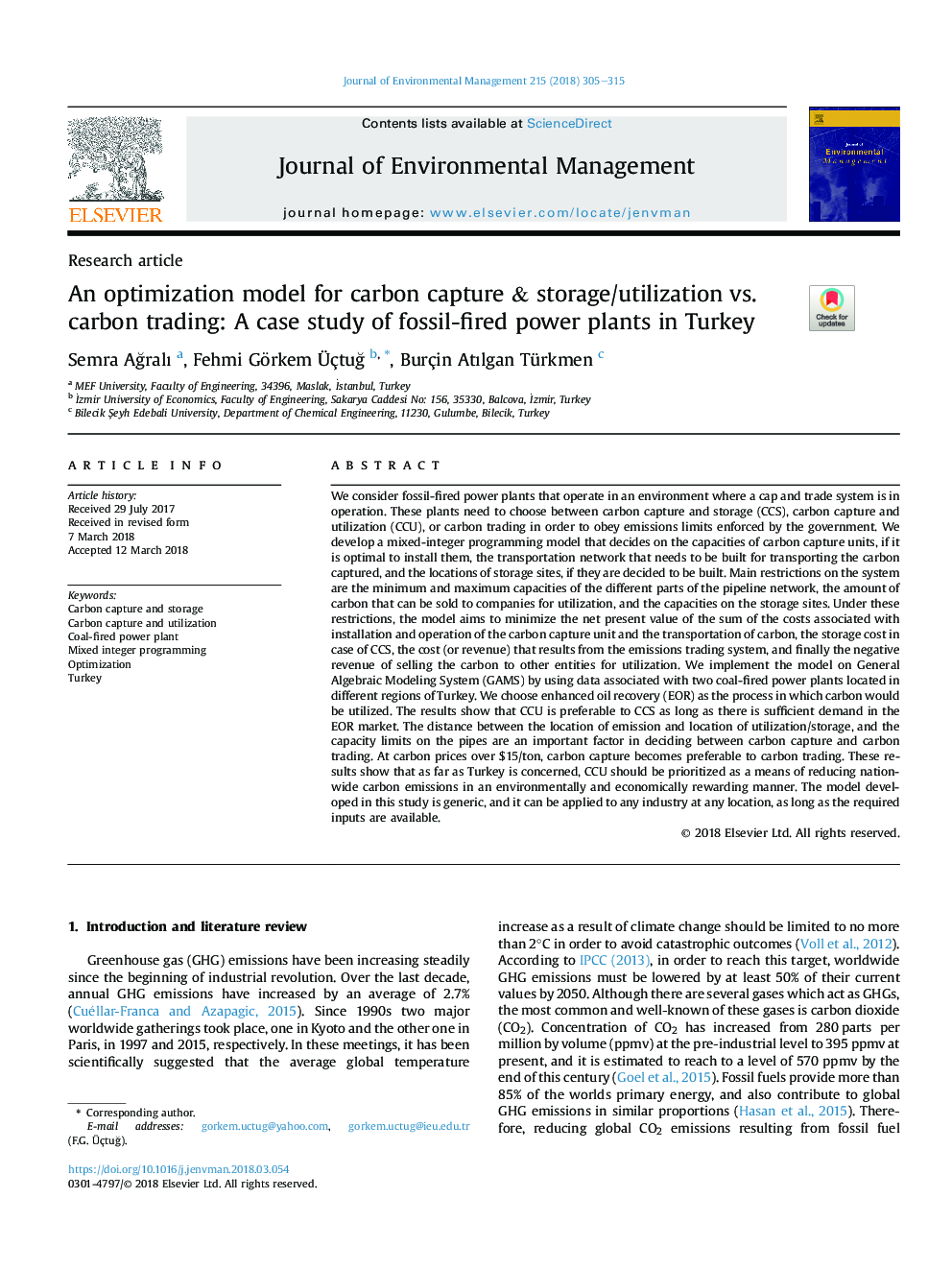| کد مقاله | کد نشریه | سال انتشار | مقاله انگلیسی | نسخه تمام متن |
|---|---|---|---|---|
| 7477763 | 1485203 | 2018 | 11 صفحه PDF | دانلود رایگان |
عنوان انگلیسی مقاله ISI
An optimization model for carbon capture & storage/utilization vs. carbon trading: A case study of fossil-fired power plants in Turkey
ترجمه فارسی عنوان
یک مدل بهینه سازی برای جذب کربن و ذخیره / مصرف در برابر تجارت کربن: مطالعه موردی نیروگاه های فسیلی در ترکیه
دانلود مقاله + سفارش ترجمه
دانلود مقاله ISI انگلیسی
رایگان برای ایرانیان
کلمات کلیدی
کربن ضبط و ذخیره سازی، ضبط و استفاده از کربن، نیروگاه زغال سنگ، برنامه ریزی عدد صحیح مختلط، بهینه سازی، بوقلمون،
موضوعات مرتبط
مهندسی و علوم پایه
مهندسی انرژی
انرژی های تجدید پذیر، توسعه پایدار و محیط زیست
چکیده انگلیسی
We consider fossil-fired power plants that operate in an environment where a cap and trade system is in operation. These plants need to choose between carbon capture and storage (CCS), carbon capture and utilization (CCU), or carbon trading in order to obey emissions limits enforced by the government. We develop a mixed-integer programming model that decides on the capacities of carbon capture units, if it is optimal to install them, the transportation network that needs to be built for transporting the carbon captured, and the locations of storage sites, if they are decided to be built. Main restrictions on the system are the minimum and maximum capacities of the different parts of the pipeline network, the amount of carbon that can be sold to companies for utilization, and the capacities on the storage sites. Under these restrictions, the model aims to minimize the net present value of the sum of the costs associated with installation and operation of the carbon capture unit and the transportation of carbon, the storage cost in case of CCS, the cost (or revenue) that results from the emissions trading system, and finally the negative revenue of selling the carbon to other entities for utilization. We implement the model on General Algebraic Modeling System (GAMS) by using data associated with two coal-fired power plants located in different regions of Turkey. We choose enhanced oil recovery (EOR) as the process in which carbon would be utilized. The results show that CCU is preferable to CCS as long as there is sufficient demand in the EOR market. The distance between the location of emission and location of utilization/storage, and the capacity limits on the pipes are an important factor in deciding between carbon capture and carbon trading. At carbon prices over $15/ton, carbon capture becomes preferable to carbon trading. These results show that as far as Turkey is concerned, CCU should be prioritized as a means of reducing nation-wide carbon emissions in an environmentally and economically rewarding manner. The model developed in this study is generic, and it can be applied to any industry at any location, as long as the required inputs are available.
ناشر
Database: Elsevier - ScienceDirect (ساینس دایرکت)
Journal: Journal of Environmental Management - Volume 215, 1 June 2018, Pages 305-315
Journal: Journal of Environmental Management - Volume 215, 1 June 2018, Pages 305-315
نویسندگان
Semra AÄralı, Fehmi Görkem ÃçtuÄ, Burçin Atılgan Türkmen,
